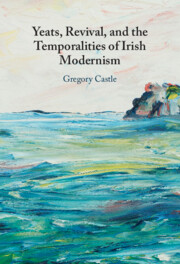320 results
11 - Les Murray
- from Part III - Authors
-
-
- Book:
- The Cambridge Companion to Australian Poetry
- Print publication:
- 13 June 2024, pp 183-196
-
- Chapter
- Export citation
6 - Experiment and Adaptation
- from Part II - Networks
-
-
- Book:
- The Cambridge Companion to Australian Poetry
- Print publication:
- 13 June 2024, pp 101-118
-
- Chapter
- Export citation
Chapter 14 - Relationships with Poets and Other Literary Figures
- from Part III - People and Milieu
-
-
- Book:
- Debussy in Context
- Published online:
- 23 May 2024
- Print publication:
- 23 May 2024, pp 135-142
-
- Chapter
- Export citation
Chapter 32 - Debussy Today
- from Part VI - Performers, Reception, and Posterity
-
-
- Book:
- Debussy in Context
- Published online:
- 23 May 2024
- Print publication:
- 23 May 2024, pp 299-310
-
- Chapter
- Export citation
Chapter 8 - Modernism
- from Part II - The Arts
-
-
- Book:
- Debussy in Context
- Published online:
- 23 May 2024
- Print publication:
- 23 May 2024, pp 79-87
-
- Chapter
- Export citation
Chapter 3 - “O When Will It Suffice?”
-
- Book:
- Yeats, Revival, and the Temporalities of Irish Modernism
- Published online:
- 11 April 2024
- Print publication:
- 18 April 2024, pp 86-120
-
- Chapter
- Export citation

Yeats, Revival, and the Temporalities of Irish Modernism
-
- Published online:
- 11 April 2024
- Print publication:
- 18 April 2024
Chapter 5 - Conclusion
-
- Book:
- The Theology of the Books of Nahum, Habakkuk, and Zephaniah
- Published online:
- 28 March 2024
- Print publication:
- 04 April 2024, pp 239-246
-
- Chapter
- Export citation
Chapter 19 - Literature
- from Part IV - Arts
-
-
- Book:
- Vaughan Williams in Context
- Published online:
- 28 March 2024
- Print publication:
- 04 April 2024, pp 161-168
-
- Chapter
- Export citation
Chapter 30 - Interwar Continental Reception
- from Part VI - Reception
-
-
- Book:
- Vaughan Williams in Context
- Published online:
- 28 March 2024
- Print publication:
- 04 April 2024, pp 259-268
-
- Chapter
- Export citation
Chapter 16 - Pageantry
- from Part III - Culture and Society
-
-
- Book:
- Vaughan Williams in Context
- Published online:
- 28 March 2024
- Print publication:
- 04 April 2024, pp 135-142
-
- Chapter
- Export citation
Chapter 22 - The Anti-Character
- from Part IV - Traditions and Trends, Techniques and Forms
-
-
- Book:
- Pirandello in Context
- Published online:
- 14 March 2024
- Print publication:
- 21 March 2024, pp 179-186
-
- Chapter
- Export citation
Chapter 23 - Myth
- from Part IV - Traditions and Trends, Techniques and Forms
-
-
- Book:
- Pirandello in Context
- Published online:
- 14 March 2024
- Print publication:
- 21 March 2024, pp 187-194
-
- Chapter
- Export citation
Coda
-
- Book:
- The Art of Uncertainty
- Published online:
- 29 February 2024
- Print publication:
- 07 March 2024, pp 202-213
-
- Chapter
- Export citation
6 - Photographing New York
- from Part II - New York and the Eastern States
-
- Book:
- Soviet Adventures in the Land of the Capitalists
- Published online:
- 18 January 2024
- Print publication:
- 22 February 2024, pp 56-67
-
- Chapter
- Export citation
Beckett’s Wasted Breath
-
- Journal:
- New Theatre Quarterly / Volume 40 / Issue 1 / February 2024
- Published online by Cambridge University Press:
- 13 February 2024, pp. 62-75
- Print publication:
- February 2024
-
- Article
-
- You have access
- Open access
- Export citation
Chapter 2 - MGM Modernism
-
- Book:
- Classical Hollywood, American Modernism
- Published online:
- 04 January 2024
- Print publication:
- 18 January 2024, pp 54-83
-
- Chapter
- Export citation
Introduction
-
- Book:
- Classical Hollywood, American Modernism
- Published online:
- 04 January 2024
- Print publication:
- 18 January 2024, pp 1-20
-
- Chapter
- Export citation
Chapter 3 - The Motion Picture Industry’s Coming of Age
-
- Book:
- Classical Hollywood, American Modernism
- Published online:
- 04 January 2024
- Print publication:
- 18 January 2024, pp 84-112
-
- Chapter
- Export citation
Chapter 6 - Conclusion
-
- Book:
- Classical Hollywood, American Modernism
- Published online:
- 04 January 2024
- Print publication:
- 18 January 2024, pp 178-191
-
- Chapter
- Export citation



